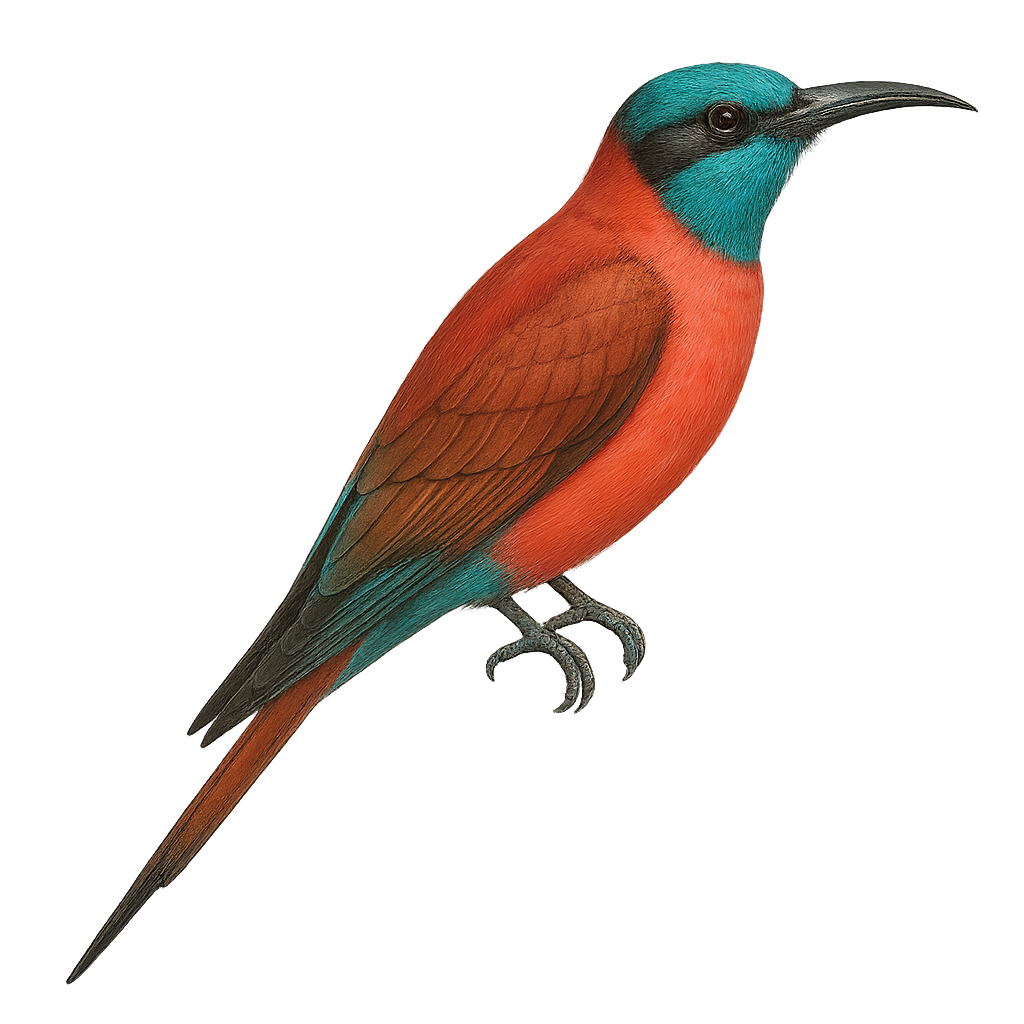Your wildlife photography guide.
Explore the northern carmine bee-eater in detail, study its behavior, prepare your shots.
Where to observe and photograph the northern carmine bee-eater in the wild
Learn where and when to spot the northern carmine bee-eater in the wild, how to identify the species based on distinctive features, and what natural environments it inhabits. The WildlifePhotographer app offers tailored photography tips that reflect the northern carmine bee-eater’s behavior, helping you capture better wildlife images. Explore the full species profile for key information including description, habitat, active periods, and approach techniques.
Northern Carmine Bee-eater
Scientific name: Merops nubicus

IUCN Status: Least Concern
Family: MEROPIDAE
Group: Birds
Sensitivity to human approach: Suspicious
Minimum approach distance: 10 m
Courtship display: March to May
Incubation: 20-22 jours
Hatchings: March to June
Habitat:
Rivers, lakes, savannas, open plains
Activity period :
Primarily active during the day, with peak activity in the morning and late afternoon.
Identification and description:
The Northern Carmine Bee-eater, Merops nubicus, is a striking bird with vibrant colors, primarily carmine red with blue-green wings and tail. Known for its graceful flight, it skillfully catches insects mid-air, particularly bees and wasps. This sociable bird lives in colonies along rivers and lakes in sub-Saharan Africa, digging burrows in sandy banks for nesting. It is a partial migrant, moving seasonally to follow prey availability. Although its habitat is threatened by human activity, it is currently listed as Least Concern by the IUCN.
Recommended lens:
400 mm – adjust based on distance, desired framing (portrait or habitat), and approach conditions.
Photography tips:
To photograph the Northern Carmine Bee-eater, aim for the golden hours of morning or afternoon to capture its vibrant colors in soft light. Use a telephoto lens of at least 400mm to get close-ups without disturbing the bird. Be patient and observe its flight patterns to anticipate its movements. Carmine bee-eaters are often in groups, providing opportunities for dynamic compositions. Finally, try to capture the bird in mid-flight to showcase its agility and natural beauty.
The WildlifePhotographer App is coming soon!
Be the first to explore the best nature spots, track rutting seasons, log your observations, and observe more wildlife.
Already 1 450 wildlife lovers subscribed worldwide

